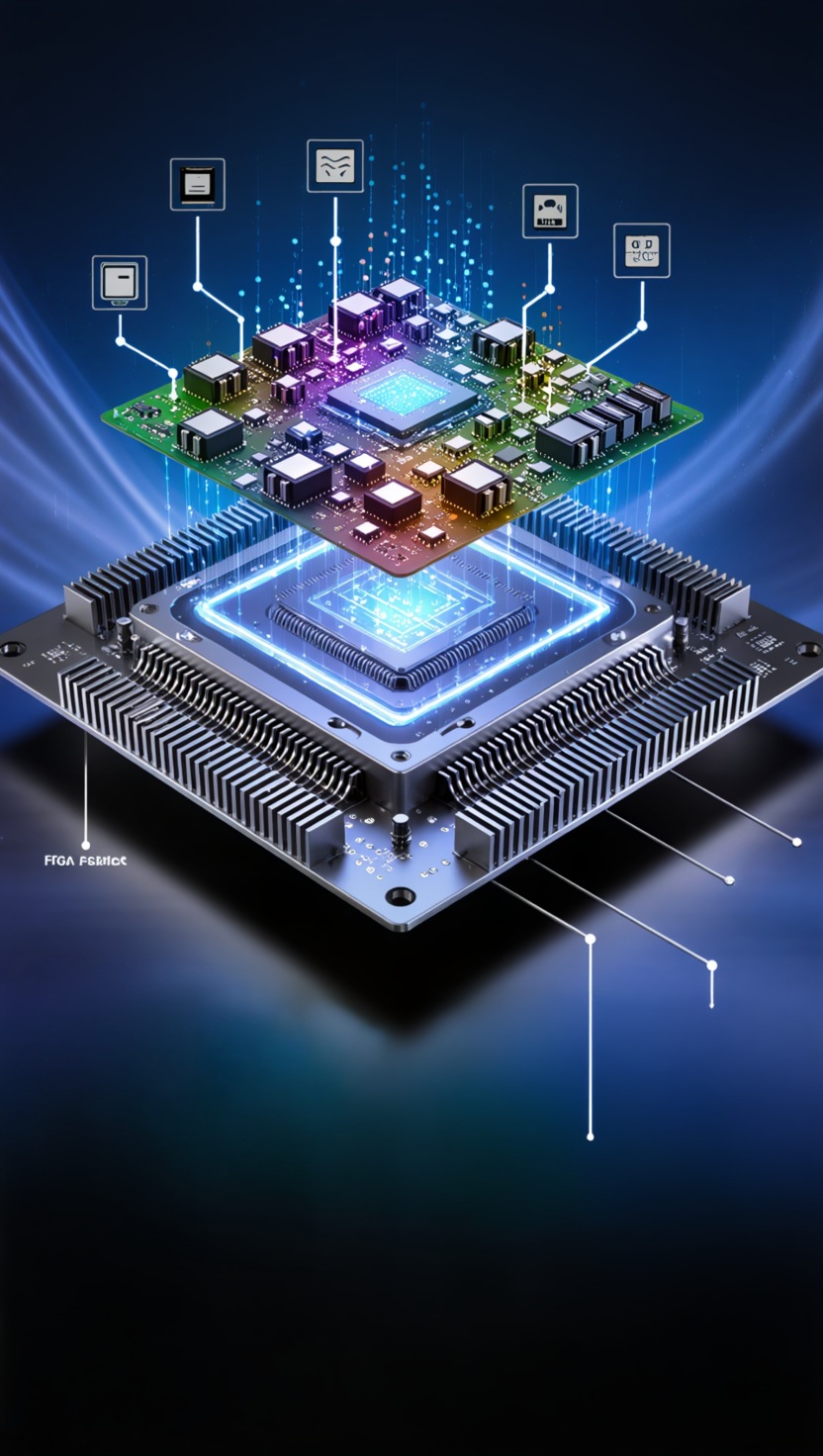Series: How to Choose an FPGA Chip - Part 1.2: Speed and Clock Performance — Unlocking Bandwidth and Throughput
2025-09-28 10:57:35 1197
Part 1.2: Speed and Clock Performance — Unlocking Bandwidth and Throughput
While logic scale defines the capacity of an FPGA, speed and clock performance determine its ability to move and process data at modern system rates. For engineers, this means ensuring interfaces such as DDR, PCIe, and SerDes meet design bandwidth requirements. For managers, speed features directly affect cost, power consumption, and supply chain risks, since high-speed devices typically rely on advanced process nodes.
1. High-Speed SerDes Interfaces
- Engineer’s View: High-speed transceivers (25G, 56G, 112G) are critical for telecom and data center applications. They enable protocols like Ethernet, CPRI, and JESD204. Jitter performance, equalization, and channel reach are vital parameters.
• Manager’s View: Devices with multi-gigabit SerDes are often on cutting-edge nodes (16 nm, 7 nm), with higher ASP and longer lead times. Strategic procurement and multi-year commitments may be required.
• Examples: Xilinx Kintex UltraScale, Intel Agilex, Achronix Speedster7t.
2. DDR4/DDR5 Memory Interface Capabilities
- Engineer’s View: High-speed memory interfaces allow FPGAs to buffer and process large datasets. DDR4 support (up to 3200 MT/s) and DDR5 (4800 MT/s+) are common in high-end devices. These interfaces are crucial for AI inference, video processing, and packet buffering.
• Manager’s View: DDR-capable devices come with higher pin counts and packaging complexity, raising cost. Sourcing DIMMs and ensuring compatibility adds another layer of supply risk.
• Examples: AMD/Xilinx Versal, Intel Stratix 10 with HBM integration.
3. PCIe Gen4/Gen5 Connectivity
- Engineer’s View: PCI Express is the backbone of system interconnect in servers, networking, and AI accelerators. Gen4 (16 GT/s) and Gen5 (32 GT/s) provide the throughput needed for SmartNICs, DPUs, and NVMe storage acceleration. Integration of hardened PCIe blocks reduces latency and design complexity.
• Manager’s View: PCIe Gen4/Gen5 FPGAs are positioned at the high end, carrying significant ASP premiums. Securing supply requires forecasting aligned with data center refresh cycles.
• Examples: Xilinx Virtex UltraScale+, Intel Agilex, Microchip PolarFire SoC (PCIe Gen4).
Comparative Table: High-Speed Interface Capabilities
|
Interface |
Throughput |
Typical Use Cases |
FPGA Families |
Business Impact |
|
SerDes |
25G–112G |
5G baseband, OTN, Ethernet, JESD204 |
Xilinx Kintex UltraScale, Intel Agilex |
High ASP, long lead times |
|
DDR4/DDR5 |
3200–4800 MT/s+ |
AI inference, video buffering, HPC workloads |
Xilinx Versal, Intel Stratix 10 |
High pin count, packaging cost |
|
PCIe Gen4/5 |
16–32 GT/s |
SmartNIC, DPU, NVMe storage acceleration |
Xilinx Virtex UltraScale+, Intel Agilex |
Premium pricing, data center demand |
Case Studies
Case Study 1: 5G Base Station with High-Speed SerDes
Challenge: A telecom OEM needed to implement massive MIMO with 64 antennas, requiring multiple 25G SerDes channels.
Solution: Intel Agilex FPGA with integrated 58G SerDes.
Result: Achieved required throughput for beamforming while reducing board complexity.
Manager’s Perspective: ASP >$800, supply tied to advanced-node availability at TSMC.
Case Study 2: AI Accelerator with DDR5 Integration
Challenge: A startup building an AI inference card required high-bandwidth memory for CNN workloads.
Solution: AMD/Xilinx Versal HBM device with integrated DDR5 and HBM stacks.
Result: Reduced external memory bottlenecks, doubling inference throughput.
Manager’s Perspective: ASP ~$2000, secured via early vendor partnership agreements.
Case Study 3: SmartNIC with PCIe Gen5
Challenge: A hyperscaler required 400G packet processing and encryption at line rate.
Solution: Xilinx Virtex UltraScale+ FPGA with hardened PCIe Gen5 x16 blocks.
Result: Enabled 8× throughput vs. CPU-only design, reduced server footprint.
Manager’s Perspective: ASP ~$1500, 40+ week lead times; multi-year contracts required.
Conclusion
Speed and clock performance define the throughput potential of FPGAs. High-speed SerDes, DDR4/DDR5, and PCIe Gen4/5 interfaces enable modern workloads, from 5G to AI to SmartNICs. For engineers, these features open design possibilities. For managers, they signal higher cost, supply risks, and long-term vendor commitments. The right choice balances bandwidth demands with budget and availability realities.






